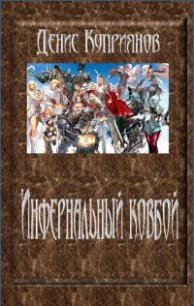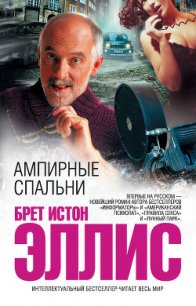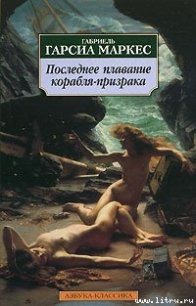Jurassic Park - Crichton Michael (книги бесплатно читать без .TXT) 📗
"Don't you?" Malcolm said. "I thought it was completely obvious."
"Wait a minute," Gennaro said. "You think animals have gotten out?"
"I know they have."
Gennaro said, "But how? You saw for yourself. They can count all the animals. They can look at all the animals. They know where all the animals are at all times. How can one possibly escape?
Malcolm smiled. "It's quite obvious," he said. "It's just a matter of your assumptions."
"Your assumptions," Gennaro repeated, frowning.
"Yes," Malcolm said. "Look here. The basic event that has occurred in Jurassic Park is that the scientists and technicians have tried to make a new, complete biological world. And the scientists in the control room expect to see a natural world. As in the graph they just showed us. Even though a moment's thought reveals that nice, normal distribution is terribly worrisome on this island."
"It is?"
"Yes. Based on what Dr. Wu told us earlier, one should never see a population graph like that."
"Why not?" Gennaro said.
"Because that is a graph for a normal biological population. Which is precisely what Jurassic Park is not. Jurassic Park is not the real world. It is intended to be a controlled world that only imitates the natural world. In that sense, it's a true park, rather like a Japanese formal garden. Nature manipulated to be more natural than the real thing, if you will."
"I'm afraid you've lost me," Gennaro said, looking annoyed.
"I'm sure the tour will make everything clear," Malcolm said.
The Tour
"This way, everybody, this way," Ed Regis said. By his side, a woman was passing out pith helmets with "Jurassic Park" labeled on the headband, and a little blue dinosaur logo.
A line of Toyota Land Cruisers came out of an underground garage beneath the visitor center. Each car pulled up, driverless and silent. Two black men in safari uniforms were opening the doors for passengers.
"Two to four passengers to a car, please, two to four passengers to a car," a recorded voice was saying. "Children under ten must be accompanied by an adult. Two to four passengers to a car, please…"
Tim watched as Grant, Sattler, and Malcolm got into the first Land Cruiser with the lawyer, Gennaro. Tim looked over at Lex, who was standing pounding her fist into her glove.
Tim pointed to the first car and said, "Can I go with them?"
"I'm afraid they have things to discuss," Ed Regis said. "Technical things."
"I'm interested in technical things," Tim said. "I'd rather go with them."
"Well, you'll be able to hear what they're saying," Regis said. "We'll have a radio open between the cars."
The second car came. Tim and Lex got in, and Ed Regis followed. "These are electric cars," Regis said. "Guided by a cable in the roadway."
Tim was glad he was sitting in the front seat, because mounted in the dashboard were two computer Screens and a box that looked to him like a CD-ROM; that was a laser disk player controlled by a computer. There was also a portable walkie-talkie and some kind of a radio transmitter. There were two antennas on the roof, and some odd goggles in the map pocket.
The black men shut the doors of the Land Cruiser. The car started off with an electric hum. Up ahead, the three scientists and Gennaro were talking and pointing, clearly excited. Ed Regis said, "Let's hear what they are saying." An intercom clicked.
"I don't know what the hell you think you're doing here," Gennaro said, over the intercom. He sounded very angry.
"I know quite well why I'm here," Malcolm said.
"You're here to advise me, not play goddamned mind games. I've got five percent of this company and a responsibility to make sure that Hammond has done his job responsibly. Now you goddamn come here-"
Ed Regis pressed the intercom button and said, "In keeping with the nonpolluting policies of Jurassic Park, these lightweight electric Land Cruisers have been specially built for us by Toyota in Osaka. Eventually we hope to drive among the animals-just as they do in African game parks-but, for now, sit back and enjoy the self-guided tour." He paused. "And, by the way, we can hear you back here."
"Oh Christ," Gennaro said. "I have to be able to speak freely. I didn't ask for these damned kids to come-"
Ed Regis smiled blandly and pushed a button. "We'll just begin the show, shall we?" They heard a fanfare of trumpets, and the interior screens flashed WELCOME TO JURASSIC PARK. A sonorous voice said, "Welcome to Jurassic Park. You are now entering the lost world of the prehistoric past, a world of mighty creatures long gone from the face of the earth, which you are privileged to see for the first time."
"That's Richard Kiley," Ed Regis said. "We spared no expense."
The Land Cruiser passed through a grove of low, stumpy palm trees. Richard Kiley was saying, "Notice, first of all, the remarkable plant life that surrounds you. Those trees to your left and right are called cycads, the prehistoric predecessors of palm trees. Cycads were a favorite food of the dinosaurs. You can also see bennettitaleans, and ginkgoes. The world of the dinosaur included more modern plants, such as pine and fir trees, and swamp cypresses. You will see these as well."
The Land Cruiser moved slowly among the foliage. Tim noticed the fences and retaining walls were screened by greenery to heighten the illusion of moving through real jungle.
"We imagine the world of the dinosaurs," said Richard Kiley's voice, "as a world of huge vegetarians, eating their way through the giant swampy forests of the Jurassic and Cretaceous world, a hundred million years ago. But most dinosaurs were not as large as people think. The smallest dinosaurs were no bigger than a house cat, and the average dinosaur was about as big as a pony. We are first going to visit one of these average-size animals, called hypsilophodonts. If you look to your left, you may catch a glimpse of them now."
They all looked to the left.
The Land Cruiser stopped on a low rise, where a break in the foliage provided a view to the east. They could see a sloping forested area which opened into a field of yellow grass that was about three feet high. There were no dinosaurs.
"Where are they?" Lex said.
Tim looked at the dashboard. The transmitter lights blinked and the CD-ROM whirred. Obviously the disk was being accessed by some automatic system. He guessed that the same motion sensors that tracked the animals also controlled the screens in the Land Cruiser. The screens now showed pictures of hypsilophodonts, and printed out data about them.
The voice said, "Hypsilophodontids are the gazelles of the dinosaur world: small, quick animals that once roamed everywhere in the world, from England to Central Asia to North America. We think these dinosaurs were so successful because they had better jaws and teeth for chewing plants than their contemporaries did. In fact, the name 'hypsilophodontid' means 'high-ridge tooth,' which refers to the characteristic self-sharpening teeth of these animals. You can see them in the plains directly ahead, and also perhaps in the branches of the trees."
"In the trees?" Lex said. "Dinosaurs in the trees?"
Tim was scanning with binoculars, too. "To the right," he said. "Halfway up that big green trunk…"
In the dappled shadows of the tree a motionless, dark green animal about the size of a baboon stood on a branch. It looked like a lizard standing on its hind legs. It balanced itself with a long drooping tail.
"That's an othnielia," Tim said.
"The small animals you see are called othnielia," the voice said, "in honor of the nineteenth-century dinosaur hunter Othniel Marsh of Yale."
Tim spotted two more animals, on higher branches of the same tree. They were all about the same size. None of them were moving.
"Pretty boring," Lex said. "They're not doing anything."
"The main herd of animals can be found in the grassy plain below you," said the voice. "We can rouse them with a simple mating call." A loudspeaker by the fence gave a long nasal call, like the honking of geese.
From the field of grass directly to their left, six lizard heads poked up, one after another. The effect was comical, and Tim laughed.
The heads disappeared. The loudspeaker gave the call again, and once again the heads poked up-in exactly the same way, one after another. The fixed repetition of the behavior was striking.
"Hypsilophodonts are not especially bright animals," the voice explained. "They have roughly the intelligence of a domestic cow."
The heads were dull green, with a mottling of dark browns and blacks that extended down the slender necks. Judging from the size of the heads, Tim guessed their bodies were four feet long, about as large as deer.
Some of the hypsilophodonts were chewing, the jaws working. One reached up and scratched its head, with a five-fingered band. The gesture gave the creature a pensive, thoughtful quality.
"If you see them scratching, that is because they have skin problems. The veterinary scientists here at Jurassic Park think it may be a fungus, or an allergy. But they're not sure yet. After all, these are the first dinosaurs in history ever to be studied alive."
The electric motor of the car started, and there was a grinding of gears. At the unexpected sound, the herd of hypsilophodonts suddenly leapt into the air and bounded above the grass like kangaroos, showing their full bodies with massive hind limbs and long tails in the afternoon sunlight. In a few leaps, they were gone.
"Now that we've had a look at these fascinating herbivores, we will go on to some dinosaurs that are a little larger. Quite a bit larger, in fact."
The Land Cruisers continued onward, moving south through Jurassic Park.
Control
"Gears are grinding," John Arnold said, in the darkened control room. "Have maintenance check the electric clutches on vehicles BB4 and BB5 when they come back."
"Yes, Mr. Arnold," replied the voice on the intercom.
"A minor detail," Hammond said, walking in the room. Looking out, he could see the two Land Cruisers moving south through the park. Muldoon stood in the corner, silently watching.




